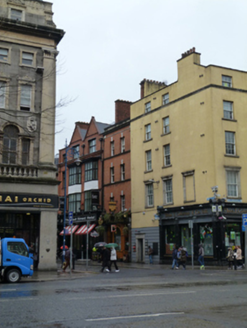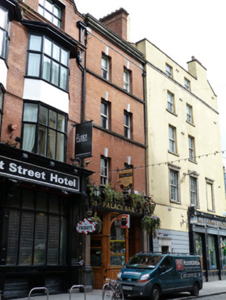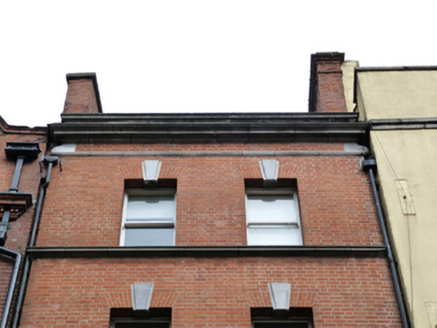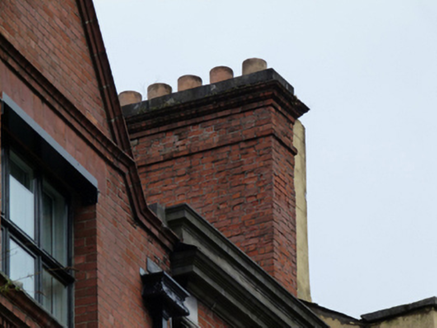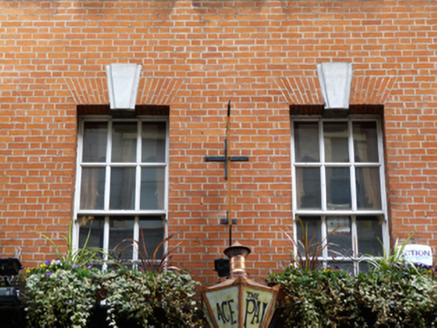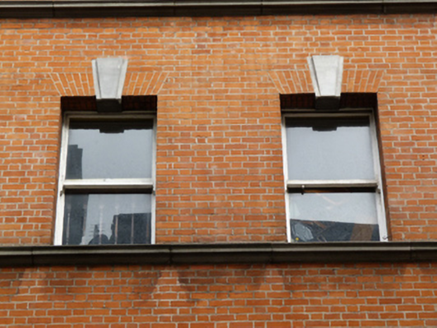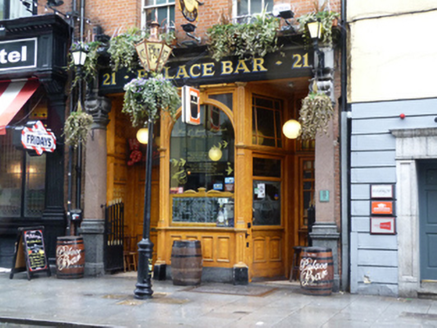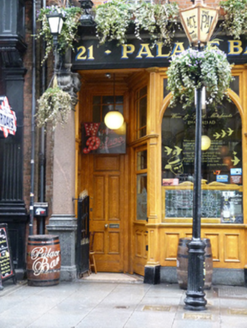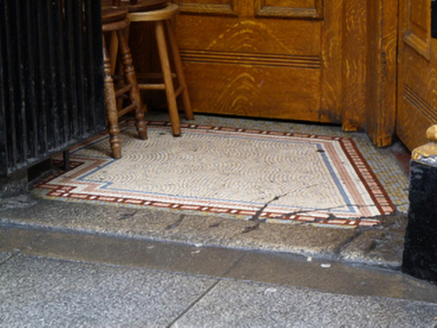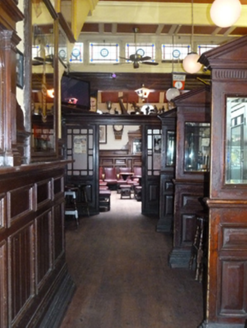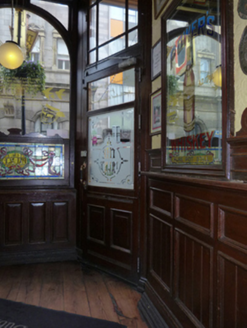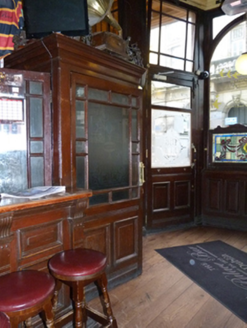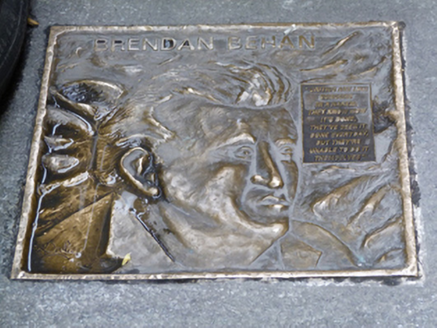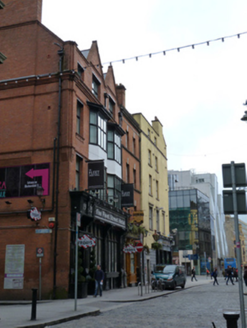Survey Data
Reg No
50020224
Rating
Regional
Categories of Special Interest
Architectural, Artistic, Historical, Social
Original Use
Public house
In Use As
Public house
Date
1880 - 1900
Coordinates
315957, 234240
Date Recorded
03/04/2015
Date Updated
--/--/--
Description
Attached two-bay four-storey public house over basement, built c.1890, with shopfront to front (south) elevation. Hipped slate roof hidden behind red brick parapet terminated by carved limestone scrolls, having carved limestone coping and heavy cornice, red brick chimneystacks with clay pots. Red brick walls, laid in Flemish bond, having carved limestone string course. Square-headed window openings with continuous carved limestone sill courses and carved limestone keystones, having six-over-six pane and one-over-one pane timber sliding sash windows. Shopfront comprising polished red granite pilasters on polished granite bases with swagged scrolled limestone brackets supporting timber fascia and cornice. Square-headed door openings to recessed porches having mosaic tiled floors and granite steps, timber panelling to walls and ceilings, timber panelled and half-glazed timber panelled doors with overlights framing canted bay having square-headed display windows, round-headed window to front having glazed spandrels, flanked by fluted pilasters, on panelled stall risers. Late nineteenth century interior with timber tongue and groove panelling to walls, stained glass roof lights and lantern to rear room, mahogany bar with snug to south end. Inlaid brass plaques to pavement to front. Located on north side of Fleet Street.
Appraisal
Established in 1823, the Hall family are noted as the earliest publicans of this premises. Street directories indicate John Sanford, a ‘grocer, tea, wine and spirit merchant’ occupied the building from the 1840s. The current building is of Victorian appearance and is probably a late nineteenth century rebuild. The pub is of historic importance as Michael Collins is reputed to have used the snug for meetings during the War of Independence. Strong literary associations are also recorded with Patrick Kavanagh, Seamus Heaney and Flann O’Brien frequenting the pub, as well as The Irish Times journalists. Apparently the ‘Crosaire’ cryptic crossword was conceived here. The regular red brick façade is enlivened by some well-executed stonework including the sill courses and carved scrolls to the parapet, lending tonal and textural variation to the facade. The retention of a late nineteenth-century shopfront and fine interior are particularly significant.
